11 Hot Peppers and How to Eat Them
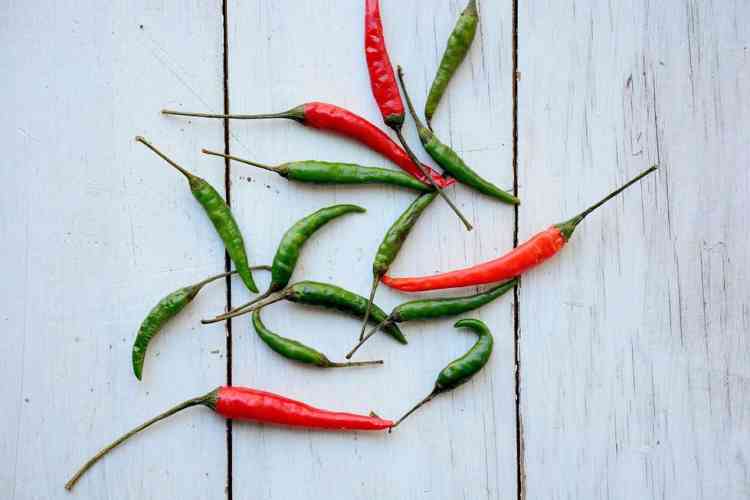
Working with extreme spice is not for the faint of heart, and you’d better know how to eat hot peppers before you seriously dive in. Unless you’re intimately acquainted with the spices you’re handling, you could be in for a too-hot-to-eat — if not potentially dangerous — meal.
Like any other form of cooking, working with these elements simply takes a little know-how. And the good news for those that are into the spicy stuff is that there are plenty of health benefits to be had by adding a kick to your dishes. Information rounded up by SF GATE shows hot peppers contribute to weight loss and cancer prevention, while research published in ScienceDaily suggests they could increase longevity.
There's an art behind how to eat hot peppers. First, eat very spicy peppers slowly — the more capsaicin your body takes in at once, the more intensely it will burn. If things get too painful, you can neutralize the burn with dairy (milk or sour cream). Remember: Drinking water won't help!
So what are you waiting for? Here’s a guide on how to eat hot peppers so that you can bring a little more heat into your life.
Jump to Section
- The Carolina Reaper
- The Trinidad Moruga Scorpion
- The Habanero Family
- Scotch Bonnet
- Malagueta Chili Pepper (Piri Piri)
- Tabasco Pepper
- Serrano Pepper
- Peter Pepper
- Kung Pao Pepper
- Jalapeño Pepper
- Banana Pepper

1. The Carolina Reaper | Scoville Units: 2.2 Million
How to eat this hot pepper: Don’t.
With a heat range of 1.6 million to 2.2 million Scoville units, the Carolina Reaper is currently the hottest known pepper in the Guinness Book of World Records. It faces a challenger from the Trinidad Moruga scorpion (which, frankly, has a more appropriately-menacing name), but for now, the Reaper reigns.
Originally created as a crossbreed of a Red Naga pepper and a Red Savina pepper, the Carolina Reaper is the brainchild of pepper master Ed Currie, proprietor of PuckerButt Pepper Company in Fort Mill, South Carolina. Eating this hot pepper might result in a trip to the hospital.
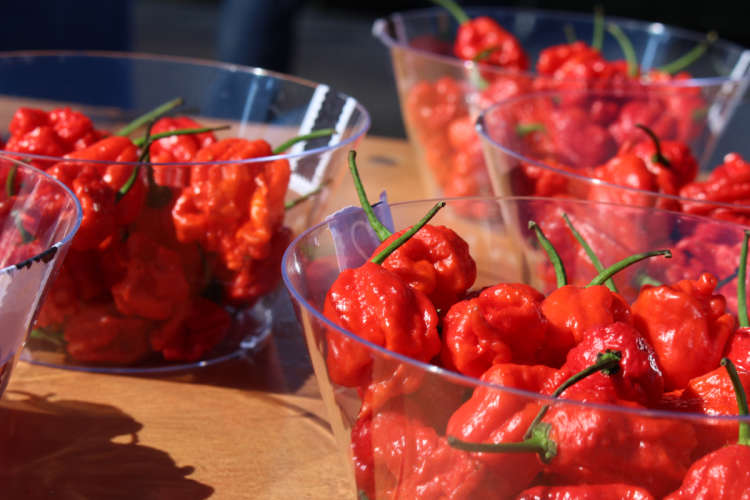
2. The Trinidad Moruga Scorpion | Scoville Units: 2 Million
How to eat this hot pepper: Don’t.
The “scorpion” name comes from the pepper’s point, which resembles a scorpion’s barb. At 1.2 to 2 million Scoville units, this red beast probably tastes like a scorpion’s barb, too.
First identified by New Mexico State University’s Chili Pepper Institute in 2012, the Moruga scorpion is the newest pepper on our list, and experts (Read: People who have the ability to actually know how to eat hot peppers without burning themselves) say that it has a fruity flavor.
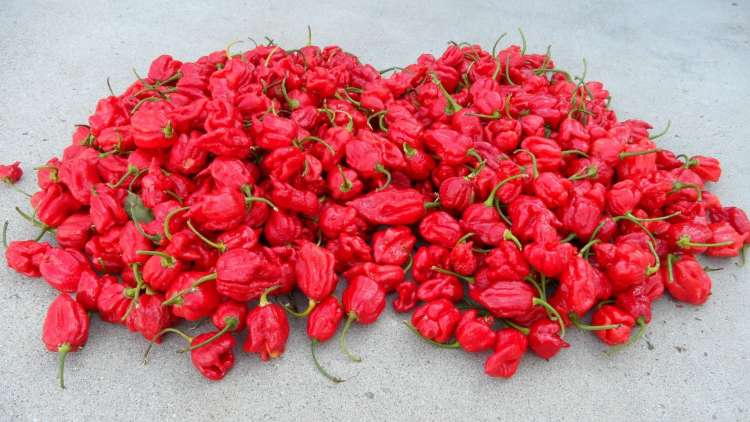
3. The Habanero Family | Scoville Units: 400,000
How to eat this hot pepper: Delicately with Mexican food or in ceviche.
Featuring the White Bullet from Mountain View, the Red Savina, the Yucatan White, the Orange Habanero (the one you see at the grocery store), the Habanero Mustard, the Golden Habanero and the Habanero Peach, this family makes up some of the world’s most widely-recognizable scalding peppers. They range from 150,000 to 400,000 Scoville units, which is nothing to scoff at.
The Habanero family may consist of some very spicy peppers, but unlike the Moruga scorpion and the Carolina Reaper, they are at least edible. While it is not wise to pop a whole one of these in your mouth, they won’t leave a lasting burn on your skin like the first two on this list. If you’re wondering how to eat hot peppers that have a decent kick without lasting damage, this is a good place to start.
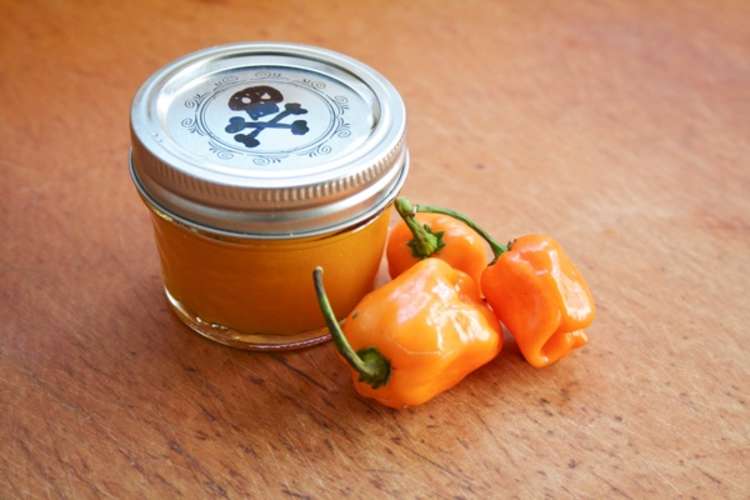
4. Scotch Bonnet | Scoville Units: 350,000
How to eat this hot pepper: In a jerk chicken rub.
This one looks like a multi-colored habanero. And it’s not just limited to plain old searing spice, either, as the Jamaican Scotch bonnet can also add sweet heat to anything when pickled, mixed in a sauce or placed in garnishes.
Make no mistake, though — your jerk rub chicken (where the Scotch bonnet really shines) will singe your guests’ mouths. If you’re learning how to eat hot peppers, you’ll be pleased to know this pepper sits pretty between 100,000 and 350,000 Scoville units and is no joke. Transport your taste buds to the Caribbean even as they are simmering.
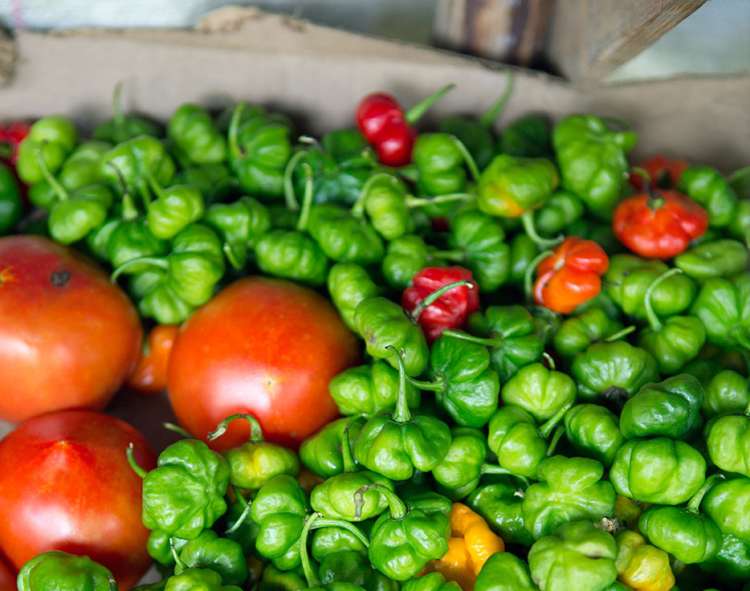
5. Malagueta Chili Pepper (Piri Piri) | Scoville Units: 300,000
How to eat this hot pepper: Blended into piri piri sauce.
If you’ve ever eaten piri piri chicken, you’ve eaten a malagueta pepper. “Piri piri” is the Swahili word for “pepper pepper,” which has become the namesake of the spicy and saucy Portuguese dish.
The pepper also appears in the cuisines of Brazil and Mozambique. In the famous sauce, the spice comes after the delicious flavor, making it an addictive and delicious mistress.
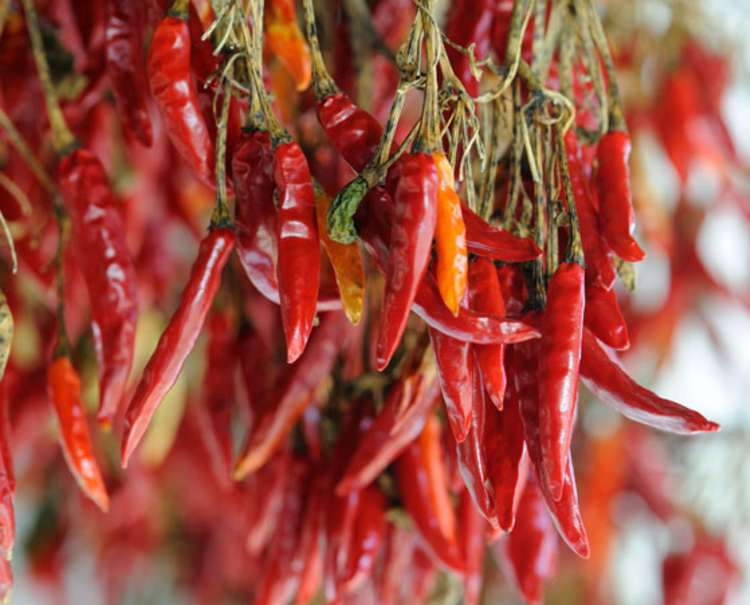
6. Tabasco Pepper | Scoville Units: 50,000
How to eat this hot pepper: In Tabasco sauce or cooked into anything you think could do with an addition of Tabasco sauce.
Possibly America’s most recognizable pepper due to its use in Louisiana’s acidic Tabasco sauce, and so popular it often stands for any generic hot sauce when asked for. Named after the Mexican state of Tabasco where the pepper originated, the pepper found itself in the hands of Edmund McIlhenny, a retired banker, who sold the sauce in old cologne bottles.
Fun fact: The McIlhenny company has the distinction of being “Supplier of Tabasco Sauce HM The Queen,” meaning it is Queen Elizabeth’s official supplier of the sauce
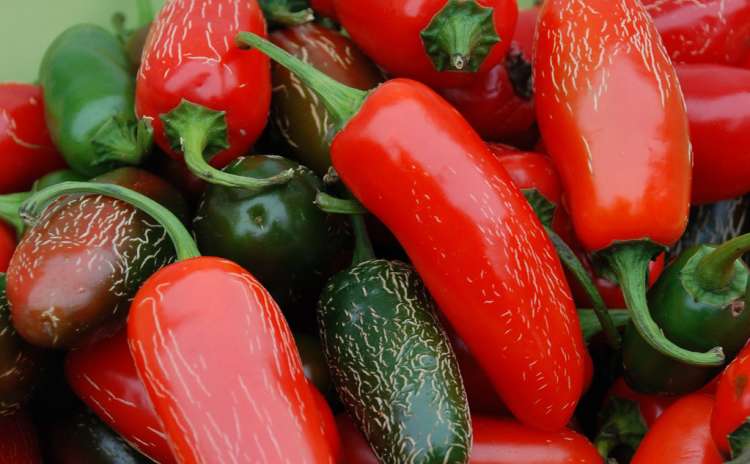
7. Serrano Pepper | Scoville Units: 25,000
How to eat this hot pepper: In soup, a salad or Huy Fong Sriracha (sort of).
This pepper, considerably hotter than the jalapeño, is usually eaten raw. While we might wish you luck with that part, it is indeed a versatile spice. It hails from the mountainous regions of Mexico, and its flavor is fresh and sharp, making it a great addition to spicy Asian or Mexican salads with cilantro or pico de gallo.
Red serrano peppers (they are usually green) once gave the distinctive flavor to Huy Fong Sriracha hot sauce, but could not be grown fast enough to meet demand, at which point the company had to switch to red jalapeños.
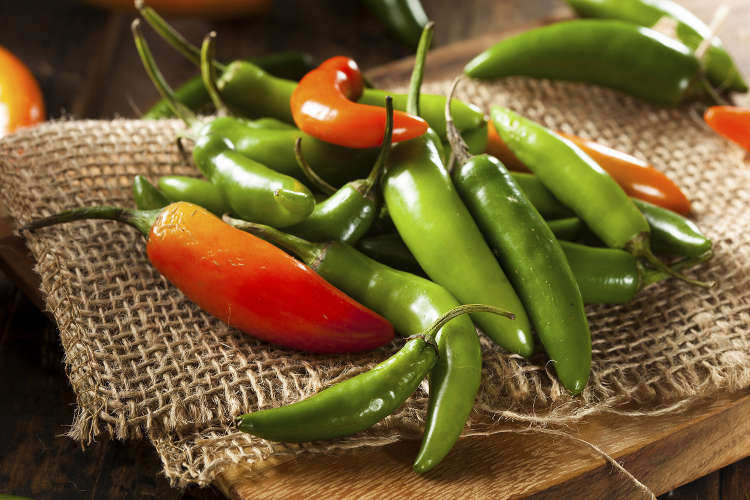
8. Peter Pepper | Scoville Units: 20,000
How to eat this hot pepper: Pickled, as a conversation piece.
This pepper’s origin is unknown, and it is very rare, which makes it a coveted item among spice-obsessed foodies. Unlike most of our peppers, which grow most commonly outside the U.S., this pepper currently calls Louisiana and East Texas home. It sits on the Scoville Scale between 10,000 and 23,000 units and is known for its unique shape.
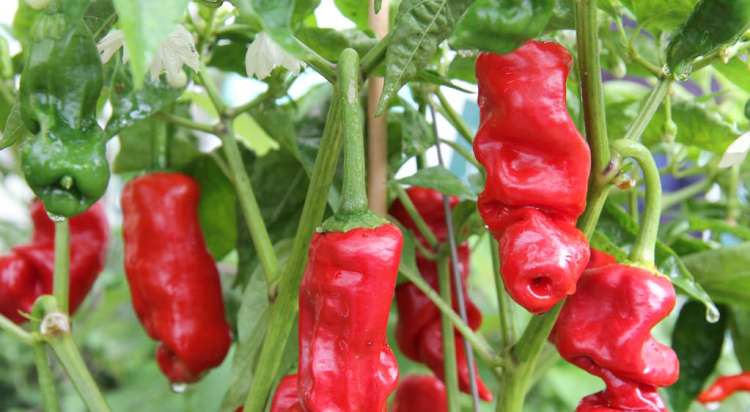
9. Kung Pao Pepper | Scoville Units: 10,000
How to eat this hot pepper: In Chinese food.
With its very own fast food chicken dish named for it, these long, skinny hybrid peppers are a fairly recent cultivation, but they’ve spread like spicy fire through Asian (especially Southeast Asian) and Asian-American cuisine. You can use them green (unripe), red (ripe), fresh or dried. It’s also quite easy to grow them, as the hearty plant grows quickly.
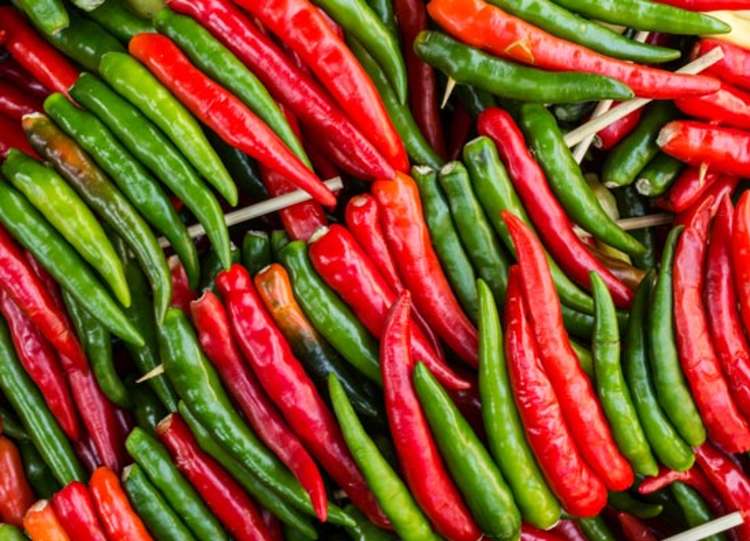
10. Jalapeño Pepper | Scoville Units: 8,000
How to eat this hot pepper: Raw, pickled or roasted as an add-in for everything from quacamole to burgers to pizza.
The jalapeño is likely one of the most widely available and most loved hot peppers on this list, making appearances in everything from Mexican to Thai food. The heat can range with jalapeños — anywhere from 3,500 to 8,000 Scoville units — depending on the individual pepper.
Raw jalapeños have a vegetal, fresh flavor simmilar to the Serrano that nicely complements salads, tacos and quacamole. When roasted, they become more mellow, smoky and lose some of their grassy bite, turning into the perfect spicy accompaniment for a variety of dishes.
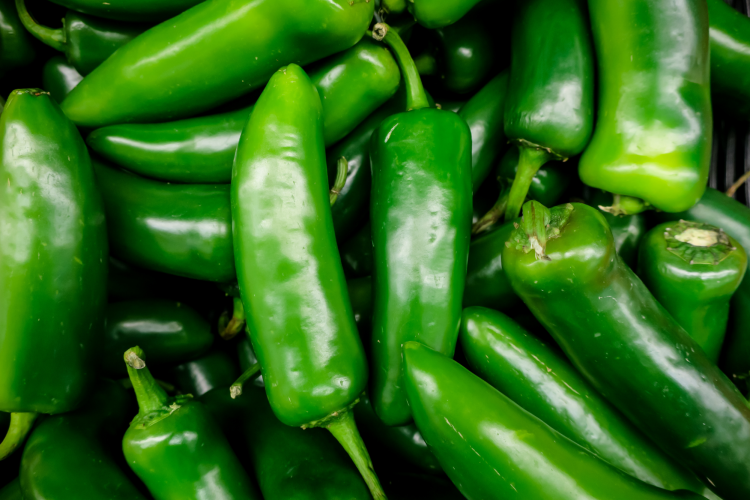
11. Banana Pepper | Scoville Units: 500
How to eat this hot pepper: Make some milagai bajji, stuff them or try a new topping at Subway.
If you’ve only seen these peppers as the pickled add-on for Subway sandwiches, you’re missing out. Try making the Indian dish milagai bajji, AKA chile fritters. If you’re making this, you should call them by their Indian name: Ooty chili.
Another similar pepper that you may have tried is pepperoncini. However, while the two are easily mistaken for one another, there are some key distinctions to bear in mind with pepperoncini vs. banana peppers. For example, pepperoncini peppers are thought of as having a bit of a kick, whereas banana peppers tend to taste sweeter, with mild heat levels that increase as the peppers mature. This gives them a range of 0 to 500 Scoville units.
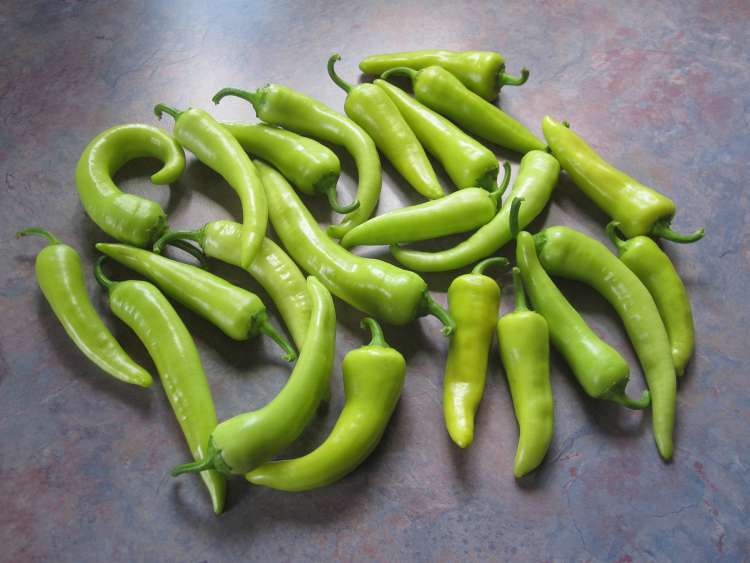
From sweet to scorchingly spicy, we hope this guide to how to eat hot peppers has inspired you to heat up your kitchen.
For more inspiration on how to eat hot peppers (and cook with them), check out in-person cooking classes and online cooking classes happening on Cozymeal.



FOOD FOR THOUGHT?
Join the conversation.